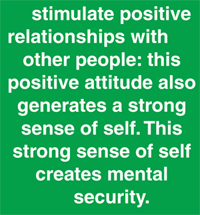|
Path to Nibbana - 14:
Stimulate positive
relationship with others
 Battaramulla Battaramulla
Siri Sudassanarama
sadaham senasuna
Ven. Dr. Mirisse Dhammika thero
According to the standard format, the next step after one’s teacher is
concentrating metta on one’s own friends. Let up pause to muse on the meaning of
friendship because this notion and sense of friendship is central to metta.
Another good translation for “metta” is friendliness. To practice metta is to
practice friendliness. Thus, our friendships with people teach us a lot about
the quality of metta. Salzberg notes:
  Think about what friendship means to you, what you value most in a friend and
what you would most like to offer others as a friend. Are there qualities of
trust, condor, fairness, or humor that stand out as being most important to you?
What kind of person would you be able to turn to if you were in need? What does
it mean to you to feel “at home” with someone? What would you like others to
value in you as their friend? Think about what friendship means to you, what you value most in a friend and
what you would most like to offer others as a friend. Are there qualities of
trust, condor, fairness, or humor that stand out as being most important to you?
What kind of person would you be able to turn to if you were in need? What does
it mean to you to feel “at home” with someone? What would you like others to
value in you as their friend?
To be a friend to someone, we have to cultivate friendly thoughts, feelings,
speech and conduct. We cannot be friends if our thoughts are egocentric and
calculating, ungenerous in feelings, harsh or derisive in speech, or uncaring in
conduct. These qualities that we require in the art of friendship are precisely
the qualities of metta. Hence, actual friendship are the most valuable
opportunities for cultivating metta. And for this reason, a metta meditation
towards our friends easily generates metta. When directing loving-kindness
towards friends, we should visualize them, getting a feeling of their presence.
However, a word of
caution is due here. The traditional teachings remind us to be careful about
thinking of a friend towards whom we entertain sexual desire. In such case,
metta may be disguised by our own sensual desires.
Next, we should concentrate on neutral people, people whom on has neither likes
nor dislikes, such as our neighbor, colleagues in school and so on. Next, one
may now concentrate on unfriendly people, even those with whom one may have had
a temporary misunderstanding or conflict. At this stage, we have to be mindful
of
our feelings towards the person who is unfriendly. Unfriendliness is never
overcome by hospitality: it can only be overcome by our friendliness, compassion
and forgiveness. One may concentrate on the following phrase: “I have no angry
feelings towards him. May he also not have any angry feelings towards me. May he
be free from danger, may he be well and happy just like I have these feelings
towards myself.” Finally, the meditator comes to direct her pure thoughts
towards all living beings without having any specific objects.
By practicing metta in the above way, one can reduce one’s own ego or
selfishness which, according to Buddhist psychology, is the ultimate cause of
all mental suffering and stress within the individual. In Chapter One, I
discussed that most stresses in adolescents are caused by poor self-esteem,
anxiety and lack of positive relationship with others. When adolescents practice
metta, they fill their minds with thoughts of loving-kindness, compassion, and
there would be little room for anger, jealousy or hatred. Therefore, this state
of mind is able to
stimulate positive relationships with other people: this positive attitude also
generates a strong sense of self. This strong sense of self creates mental
security.
Which will not be eroded by external causes of stress such as environment and
society. |
